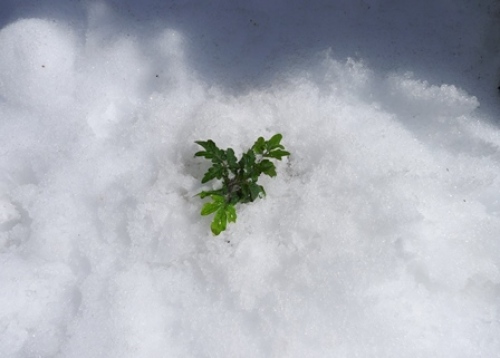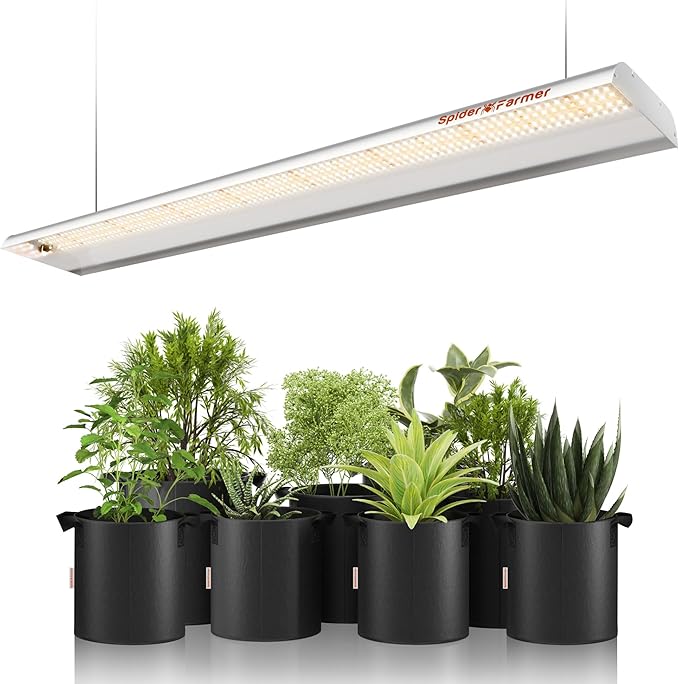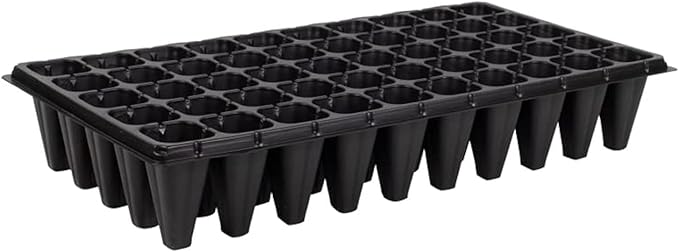
Give gardeners one warm spring day and they’re itching to get planting. The problem with that is that one warm day can be followed by colder temperatures, frost and maybe even a blizzard. Being a more patient planter will pay off in the long run.
By waiting for soil to warm and air temperatures to stabilize, vegetable gardeners can avoid some big issues in the garden. When warm season fruits and vegetables get planted too soon, temperature swings can actually set plants back. That means they’ll take longer to start growing when weather warms. Waiting actually means a faster start.
Wait for the soil to get drier and warmer.
Working in wet soil compacts the soil leaving a soggy mess instead of a light soil for delicate roots to start growing. Wait for the soil to be warm and crumbly before starting to work in it. And never walk on garden soil.
Wait for reliable night time temperatures.
Warm season crops, like tomatoes and peppers, need warm night time temperatures to start growing. Watch the weather reports and delay planting until nights are consistently 50-55 degrees. Tomatoes that set blossoms in cold weather can grow into malformed fruits while the growth of other plants can be delayed and they may not mature before the first frost hits in fall.
Wait for plants to harden off.
When vegetable plants get their start indoors, they need extra time before being planted outside. Take time to gradually expose tender plants to sunlight, wind and uneven temperatures. When plants are almost ready for the garden, take them outside for short amounts of time each day and protect them from direct sunlight and wind for the first few days. On chilly nights, move plants into a shed, garage, or back indoors. Expose plants to a bit more sunshine each day, starting with morning sun and afternoon shade. Hardening off takes a week or more before stems are sturdy and leaves thicken. Then plant in garden beds, raised beds or containers.
Wait for results.
Good care throughout the season ensures a healthy vegetable garden. Keep soil moist, but not soggy. Always water at the soil level to keep leaves dry. Fertilize on a schedule depending on the fruits and vegetables you’re growing.
Don’t wait to harvest.
Harvest crops when they’re ready. Here’s where waiting can cause problems because plants can stop producing if fruits and vegetables are left in the garden too long. Clip, snip and enjoy! If you keep harvesting, plants will keep producing.
Fine Gardening Recommended Products

Corona® Multi-Purpose Metal Mini Garden Shovel
Fine Gardening receives a commission for items purchased through links on this site, including Amazon Associates and other affiliate advertising programs.

SF600 LED Grow Lights 2x4 ft
Fine Gardening receives a commission for items purchased through links on this site, including Amazon Associates and other affiliate advertising programs.

Nothers RooTrimmer 50 Cell, 10pcs
Fine Gardening receives a commission for items purchased through links on this site, including Amazon Associates and other affiliate advertising programs.



















Comments
Log in or create an account to post a comment.
Sign up Log in